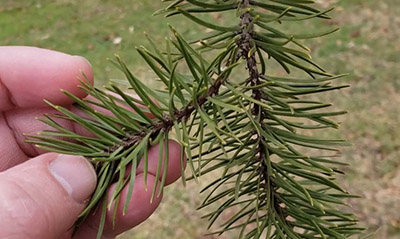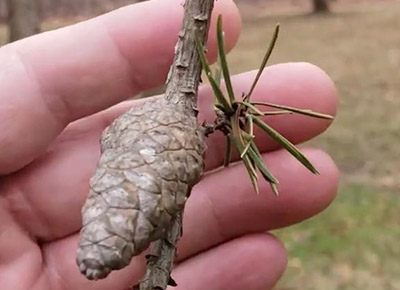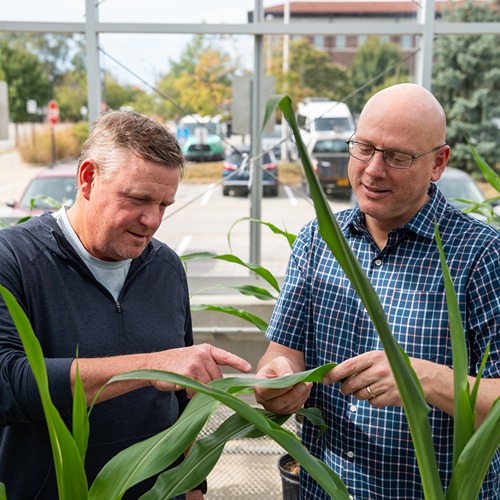Intro to Trees of Indiana: Jack Pine
The classic and trusted book "Fifty Common Trees of Indiana" by T.E. Shaw was published in 1956 as a user-friendly guide to local species. Nearly 70 years later, the publication has been updated through a joint effort by the Purdue Department of Forestry and Natural Resources, Indiana 4-H, and the Indiana Department of Natural Resources, and reintroduced as "An Introduction to Trees of Indiana."
A printed copy of the full publication is available for purchase for $7 in the Purdue Extension Education Store. The field guide helps identify common Indiana woodlot trees.
Each week, the Intro to Trees of Indiana web series will offer a sneak peek at one species from the book, paired with an ID That Tree video from Purdue Extension forester Lenny Farlee to help visualize each species as it stands in the woods. Threats to species health as well as also insight into the wood provided by the species, will be provided through additional resources as well as the Hardwoods of the Central Midwest exhibit of the Purdue Arboretum, if available.
species as it stands in the woods. Threats to species health as well as also insight into the wood provided by the species, will be provided through additional resources as well as the Hardwoods of the Central Midwest exhibit of the Purdue Arboretum, if available.
This week, we meet the Jack pine, or Pinus banksiana.
This conifer, also known as scrub pine, has clusters of two dark green needles, which are one to one and a half inches long, noticeably curved or arched like a bow and slightly twisted.
Bark on the jack pine is dark to medium gray, thin and flaky when young and features thick plates in older trees. This tree growth irregularly and can produce between one and three whorls of side branches annually. It tends to have a much lighter crown than white pine or the spruces.
The cones of jack pine are one to three inches long and remain closed while on the tree unless disturbed by a heat event such as fire. The cones may also be curved and twisted into many irregular shapes and tend to stay on the tree for many years.
Jack pine, which grows to between 35 and 65 feet tall, is typically found on acidic, moist, sandy and well-drained soil. It does have some tolerances to alkaline soil, dry sites and road salt. According to the U.S. Forest Service database, the native range of the jack pine is the northern Great Lakes states and into Canada. It extends from northern Canada southwest through Maine, New Hampshire, northern New York, central Quebec and northern Ontario, Michigan, extreme northwest Indiana, and northeast Illinois. It also stretches through Wisconsin, Minnesota and into Manitoba, Saskatchewan, central Alberta and extreme northeast British Columbia.
The Morton Arboretum notes that jack pine may be highly susceptible to ice damage and windthrow can be a problem due to the shallow root system. It may be difficult to find in nurseries, but it transplants easily due to a fairly shallow root system. This species should not be planted in wet soils. Jack pine is not as susceptible to pests as other pines, but can still have issues with sawflies, tussock moth and needle casts.
The Wood Database states that the jack pine weighs in at 31 pounds per cubic foot and has a considerably lower density than the yellow pine species found in the eastern United States. This species is rated as easy to work with using both hand and machine tools and it glues and finishes well. Jack pine lumber is generally rather knotty and tends to be less desirable than other clearer pine species within its range.
Jack pine is used for pulpwood and construction lumber as well as to make boxes and crates, pallets and poles. This species also can be used in windbreaks and for restoration of eroded sites or on sandy soils.
Other Resources:
ID That Tree: Jack Pine
Morton Arboretum: Jack Pine
Borers of Pines and Other Needle Bearing Evergreens in Landscapes, The Education Store
Managing the Zimmerman Pine Moth, The Education Store
Purdue Arboretum Explorer
The Woody Plant Seed Manual, U.S. Forest Service
Purdue Plant Doctor
Native Trees of the Midwest, The Education Store
Shrubs and Woody Vines of Indiana and the Midwest, The Education Store
Investing in Indiana Woodlands, The Education Store
Forest Improvement Handbook, The Education Store
ID That Tree, Purdue Extension-Forestry & Natural Resources (FNR) YouTube playlist
Woodland Management Moment , Purdue Extension-FNR YouTube playlist





